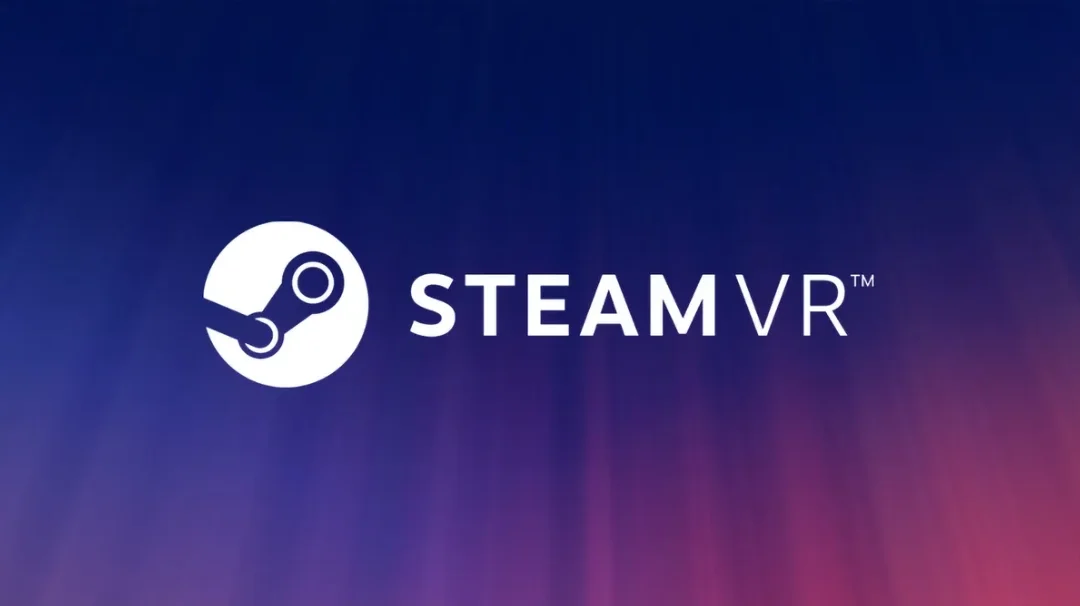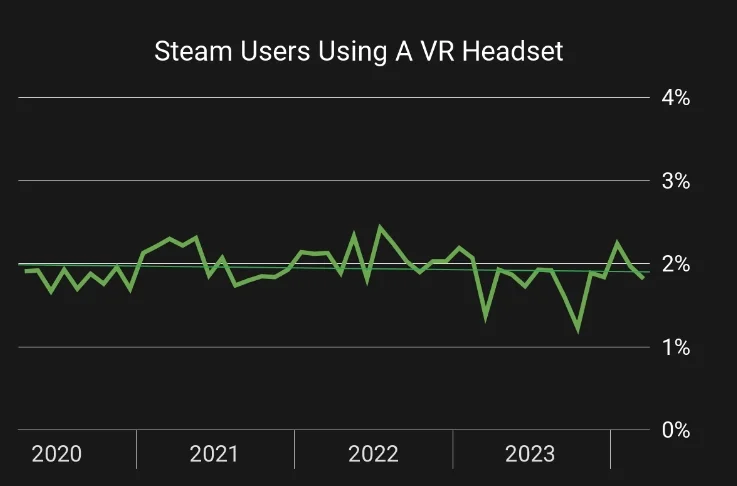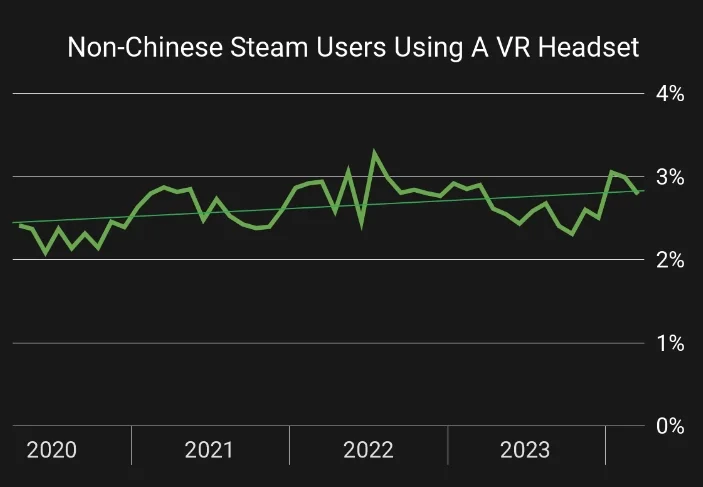On April 9th, it was reported that many people commonly believe that the PC VR usage on the Steam platform is declining, but this is not the case in reality.

In March of this year, Steam conducted its monthly hardware and software survey, which includes a statistic indicating the percentage of Steam users who use VR headsets with SteamVR. The data for March showed 1.82%, which is lower than the 1.97% recorded in February. Since March 2020, this data has indeed shown a declining trend. Valve changed its survey methodology that month, no longer solely counting currently connected VR headsets but scanning SteamVR usage records from the past month.

At first glance, it's easy to conclude that the PC VR market has been shrinking over the past four years. However, according to the foreign media outlet UploadVR, there are actually two important factors that need to be considered.
Firstly, this is a percentage data. This means that if the growth rate of PC gamers is faster than the growth rate of PC VR users, even if the total number of PC VR users actually increases, this percentage will still decrease. However, this doesn't fully explain the issue. For the success of PC VR, it should at least maintain synchronous growth with the PC gaming market, right?
The second factor is actually the key point. The Steam hardware survey includes users from China, where the most popular PC VR headsets and SteamVR games currently lack official sales channels. Moreover, the number of Chinese users on the Steam platform has been increasing year by year.
The following figure displays the trend of the same survey data after excluding Steam users who have set their language to Chinese. It can be observed that after excluding data from Chinese users, the usage rate of PC VR shows an increasing trend.

Unlike Meta's strong investment in VR content production for Quest and Sony's efforts with PlayStation VR2, Valve has not yet made similar investments in SteamVR content. However, despite this, the PC VR market still seems to maintain organic growth momentum, albeit at a slower pace compared to other mainstream VR platforms.
Source: IT Home


